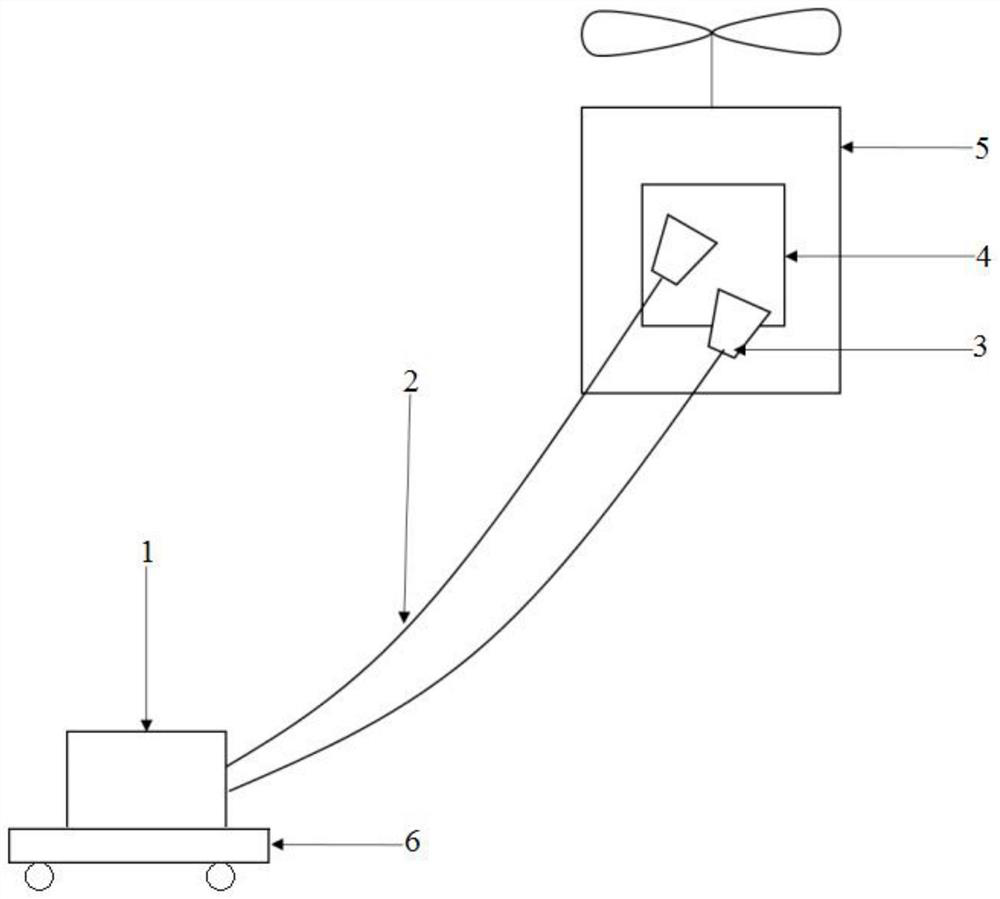Mooring unmanned aerial vehicle
An unmanned aerial vehicle and tethering technology, applied in the field of unmanned aerial vehicles, can solve the problems of heavy metal cables, limit the flying height of unmanned aerial vehicles, and high cost of high-power and high-voltage control devices, so as to enhance the load capacity and improve the tethering. Endurance time and the effect of increasing flight altitude
- Summary
- Abstract
- Description
- Claims
- Application Information
AI Technical Summary
Problems solved by technology
Method used
Image
Examples
Embodiment Construction
[0018] The following will clearly and completely describe the technical solutions in the embodiments of the present invention with reference to the accompanying drawings in the embodiments of the present invention. Obviously, the described embodiments are only some, not all, embodiments of the present invention. Based on the embodiments of the present invention, all other embodiments obtained by persons of ordinary skill in the art without making creative efforts belong to the protection scope of the present invention.
[0019] The purpose of the present invention is to provide a tethered unmanned aerial vehicle to solve the problems existing in the prior art, reduce the energy consumption of the unmanned aerial vehicle, enhance the loading capacity of the unmanned aerial vehicle, increase the flight height, and significantly increase the endurance time of the unmanned aerial vehicle.
[0020] In order to make the above objects, features and advantages of the present invention ...
PUM
 Login to View More
Login to View More Abstract
Description
Claims
Application Information
 Login to View More
Login to View More - R&D
- Intellectual Property
- Life Sciences
- Materials
- Tech Scout
- Unparalleled Data Quality
- Higher Quality Content
- 60% Fewer Hallucinations
Browse by: Latest US Patents, China's latest patents, Technical Efficacy Thesaurus, Application Domain, Technology Topic, Popular Technical Reports.
© 2025 PatSnap. All rights reserved.Legal|Privacy policy|Modern Slavery Act Transparency Statement|Sitemap|About US| Contact US: help@patsnap.com

